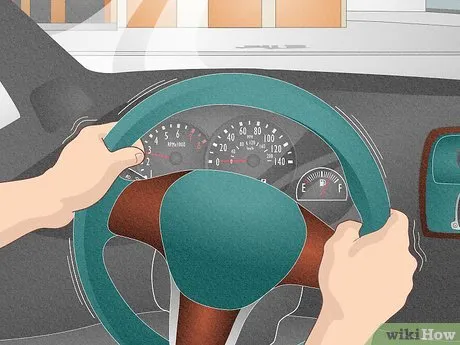


A car shaking or vibrating while idling is a common issue that can indicate various underlying problems. When a vehicle is idling, the engine should run smoothly without excessive vibrations. However, if the car starts to shake or vibrate excessively, it could be a sign of a potential issue that needs to be addressed. Ignoring this problem can lead to further damage and costly repairs.

Over the years, I've learned that several factors can contribute to a car shaking or vibrating when idling. Let's delve into the main suspects:
Spark plugs play a crucial role in igniting the air-fuel mixture within the engine cylinders. When these little powerhouses become worn or fouled, they can cause misfiring, leading to uneven combustion and, consequently, vibrations. Trust me; I've seen my fair share of neglected spark plugs causing all sorts of trouble.
| Spark Plug Condition | Potential Issues |
|---|---|
| Worn electrodes | Reduced spark intensity, misfiring |
| Fouled (oil, carbon deposits) | Disrupted spark, misfiring |
| Cracked insulator | Electrical leakage, misfiring |
Imagine a well-oiled machine, where every component works in perfect harmony. Now, picture a vacuum leak disrupting that harmony. These pesky leaks can occur in the intake system, causing an imbalance in the air-fuel ratio. As a result, the engine may run lean or rich, leading to incomplete combustion and those dreaded vibrations at idle.
Common sources of vacuum leaks:
Cracked or deteriorated vacuum hoses
Loose hose connections
Damaged gaskets or seals
Leaks in the intake manifold or throttle body
Motor mounts are the unsung heroes that secure the engine to the vehicle's frame and absorb vibrations. When these mounts become worn out or broken, they can no longer do their job effectively. Imagine trying to hold a heavy weight with weak arms – that's what the engine experiences when the motor mounts fail, resulting in excessive shaking, especially at idle.
Signs of worn motor mounts:
Excessive engine movement or rocking
Knocking or clunking noises during acceleration or deceleration
Visible cracks or deterioration in the rubber mounts
Have you ever tried to regulate the flow of water with a faulty valve? It's a recipe for chaos, right? Well, the same principle applies to the idle air control valve in your car. This little component is responsible for regulating the amount of air entering the engine at idle. If it's stuck or clogged, it can cause an improper air-fuel mixture, leading to rough idling and, you guessed it, vibrations.
Symptoms of a faulty idle air control valve:
Rough idling or stalling
Fluctuating idle speed
Engine hesitation or stumbling during acceleration
Fuel injectors are like the gatekeepers of your engine's fuel supply. Over time, these tiny components can become clogged with deposits, restricting the proper flow of fuel into the cylinders. When this happens, an uneven air-fuel mixture can occur, causing misfiring and those pesky vibrations at idle.
| Fuel Injector Condition | Potential Issues |
|---|---|
| Clogged or restricted | Uneven fuel delivery, misfiring |
| Leaking | Lean or rich air-fuel mixture |
| Faulty injector circuit | Incorrect fuel delivery timing |
Timing is everything, especially when it comes to the intricate dance of an engine's components. A worn, loose, or damaged timing belt can cause these components to fall out of sync, resulting in misfiring and vibrations. This issue is more common in high-mileage vehicles, so it's essential to stay on top of your timing belt maintenance.
Signs of timing belt issues:
Engine misfiring or rough running
Lack of power or poor acceleration
Check engine light illuminated (timing-related codes)
Now that we've identified the potential culprits, let's talk about how to diagnose the cause of the shaking. Here's a step-by-step approach:

Check for Trouble Codes: Start by connecting an OBD-II scanner to your vehicle's diagnostic port. Codes related to misfires, vacuum leaks, or sensor issues can provide valuable clues about the underlying problem.
Inspect the Spark Plugs: Remove and examine the spark plugs for signs of fouling, damage, or excessive wear. If they look questionable, it's time for a replacement.
Check for Vacuum Leaks: Carefully inspect all vacuum hoses and connections for any cracks, holes, or loose fittings. A simple visual inspection can often reveal the source of a pesky vacuum leak. You can also perform a smoke test or use a vacuum gauge to pinpoint the leak.
Evaluate the Motor Mounts: Try shifting your transmission to neutral while the engine is idling. If the shaking subsides, it's a strong indication that the motor mounts are the culprits. Inspect them for signs of damage or excessive wear.
Test the Idle Air Control Valve: This component can be a bit tricky to diagnose, but a professional mechanic can perform tests to check its operation and determine if it needs cleaning or replacement. This may involve monitoring the idle speed or checking the valve's response to commands from the engine control module.
Inspect the Fuel Injectors: Look for any signs of clogging or leaks in the fuel injectors. If they appear to be the source of the problem, consider having them professionally cleaned or replaced. You can also perform a fuel injector flow test to check for any inconsistencies.
Examine the Timing Belt: If your vehicle has a timing belt, inspect it for any cracks, fraying, or looseness. If it shows signs of wear or is due for replacement based on the manufacturer's recommended interval, it's time for a new one. Timing belt issues can also be diagnosed by checking for timing-related trouble codes or performing a compression test.
Once you've identified the root cause of the shaking, it's time to roll up your sleeves (or bring your car to a trusted mechanic) and get to work. Here are some common repair procedures:
Replacing spark plugs is a relatively straightforward task that can often be done at home with the right tools. It involves disconnecting the battery, removing the old plugs, inspecting the wells for debris, and installing new ones according to the manufacturer's specifications.
Spark plug replacement procedure:
Disconnect the negative battery cable.
Remove the spark plug wires or coil packs.
Use a spark plug socket to remove the old spark plugs.
Inspect the spark plug wells for any debris and clean if necessary.
Install new spark plugs, following the torque specifications.
Reconnect the spark plug wires or coil packs.
Reconnect the negative battery cable.
Fixing a vacuum leak can range from a simple hose replacement to a more involved gasket or component replacement, depending on the source of the leak. The key is to ensure all connections are tight and secure.
Vacuum leak repair steps:
Visually inspect all vacuum hoses and connections for any cracks, holes, or loose fittings.
Replace any damaged or deteriorated vacuum hoses.
Ensure all connections are tight and secure.
If the leak persists, inspect and replace any faulty gaskets or seals.
Replacing motor mounts can be a bit more involved, as it requires safely lifting and supporting the vehicle, removing the old mounts, and installing new ones according to the specified torque settings.
Motor mount replacement procedure:
Safely lift and support the vehicle.
Locate and remove the motor mount bolts or nuts.
Carefully remove the old motor mount.
Install the new motor mount and tighten the bolts or nuts to the specified torque.
Depending on the condition of the idle air control valve, it may need to be cleaned or replaced entirely. This process involves locating the valve, disconnecting it, and either cleaning it with a throttle body cleaner or installing a new one.
Idle air control valve repair steps:
Locate the idle air control valve, typically near the throttle body.
Disconnect the electrical connector and any vacuum hoses.
Remove the valve and clean it with throttle body cleaner or replace it if necessary.
Reinstall the valve and reconnect all components.
Clogged fuel injectors can often be cleaned using an ultrasonic cleaner, but in some cases, they may need to be replaced. This process involves removing the fuel rail and injectors, cleaning or replacing them, and reinstalling everything correctly.
Fuel injector repair procedure:
Disconnect the negative battery cable.
Remove the fuel rail and injectors.
Clean the injectors using an ultrasonic cleaner or replace them if necessary.
Reinstall the injectors and fuel rail.
Reconnect the negative battery cable.
Replacing a timing belt is a critical maintenance task that should be performed according to the manufacturer's recommendations. It involves carefully removing the old belt, ensuring proper alignment and tension, and reinstalling any components that were removed during the process.
Timing belt replacement steps:
Disconnect the negative battery cable.
Remove any components obstructing access to the timing belt (e.g., drive belts, covers).
Carefully remove the old timing belt, following the manufacturer's instructions.
Install the new timing belt, ensuring proper alignment and tension.
Reinstall any removed components and reconnect the negative battery cable.
As with most automotive issues, prevention is always better than cure. Here are some tips to help prevent your car from shaking or vibrating when idling:
Follow Maintenance Schedules: Replace spark plugs, air filters, and other maintenance items according to the manufacturer's recommended intervals. Regular maintenance can go a long way in preventing issues like this.
Inspect Components Regularly: During routine maintenance, inspect vacuum hoses, motor mounts, and other components for signs of wear or damage. Addressing issues early can save you from bigger problems down the road.
Use High-Quality Fuel: Opt for high-quality fuel and consider adding fuel system cleaners periodically to help prevent injector clogging and other fuel-related issues.
Replace Timing Belts on Time: If your vehicle has a timing belt, make sure to follow the manufacturer's recommended service intervals for replacement. A broken timing belt can cause significant engine damage.
Drive Responsibly: Avoid aggressive driving and rapid acceleration from a stop, as these behaviors can put extra strain on the engine and its components, potentially leading to premature wear and vibrations.
While the cost of repairs can vary depending on the specific cause and the labor rates in your area, here are some approximate cost ranges to give you an idea:
| Repair | Approximate Cost Range |
|---|---|
| Spark plug replacement | $100 - $300 (including parts and labor) |
| Vacuum leak repair | $100 - $300 (depending on the extent of the leak) |
| Motor mount replacement | $200 - $500 (per mount, including parts and labor) |
| Idle air control valve replacement | $150 - $400 (including parts and labor) |
| Fuel injector cleaning or replacement | $200 - $800 (depending on the number of injectors and labor) |
| Timing belt replacement | $300 - $1,000 (including parts, labor, and any additional components) |
Remember, addressing the issue promptly is crucial, as prolonged operation with excessive vibrations can lead to further damage and more expensive repairs down the line.
In the world of automotive mechanics, a car shaking or vibrating when idling is a common issue with various potential causes. From faulty spark plugs to vacuum leaks, loose motor mounts, and more, identifying and addressing the root cause is key to restoring your vehicle's smooth idle.
As a mechanic, I've seen firsthand how these issues can be frustrating for drivers, but with the right knowledge and approach, they can be resolved effectively. Whether you choose to tackle the repairs yourself or seek the assistance of a professional, understanding the underlying causes and potential solutions is invaluable.
So, the next time your car starts shaking or vibrating at idle, don't panic. Take a deep breath, and remember the wisdom shared in this article. With a little patience and the right guidance, you'll be back on the road, enjoying a smooth and vibration-free ride in no time.
Happy motoring, my friends!
Signs of worn spark plugs include reduced fuel efficiency, difficulty starting the engine, and engine misfiring or rough idling. Replacing them at the recommended intervals can prevent excessive vibrations at idle.
You can perform a visual inspection of all vacuum hoses and connections for cracks, holes, or loose fittings. A smoke test or using a vacuum gauge can also help pinpoint the exact location of the leak.
The idle air control valve can become clogged or stuck due to carbon buildup, preventing it from regulating the correct amount of air entering the engine at idle. Cleaning or replacing the valve may be necessary.
There is no set interval for replacing fuel injectors, but they should be inspected and cleaned or replaced if clogged or leaking, which can cause rough idling and vibrations.
A failing oxygen sensor can cause poor fuel economy, rough idling, and engine misfiring. It may also trigger the check engine light due to the engine control module receiving inaccurate information.
If the engine shakes or vibrates excessively, especially when the transmission is in neutral, it could indicate worn or broken motor mounts that need to be replaced.
Yes, a loose, worn, or damaged timing belt can cause the engine components to fall out of sync, resulting in misfiring and vibrations at idle.
The cost of replacing motor mounts can range from $200 to $500 per mount, including parts and labor, depending on the make and model of the vehicle.
Following the recommended maintenance schedules, using high-quality fuel, and replacing components like timing belts and spark plugs on time can help prevent excessive vibrations at idle.
It is generally not recommended to drive with a shaking idle for an extended period, as it could indicate a more serious underlying issue that may lead to further damage or safety concerns if left unaddressed.

Sarah isn't your average gearhead. With a double major in Mechanical Engineering and Automotive Technology, she dived straight into the world of car repair. After 15 years of turning wrenches at dealerships and independent shops, Sarah joined MICDOT to share her expertise and passion for making cars run like new. Her in-depth knowledge and knack for explaining complex issues in simple terms make her a valuable asset to our team.



